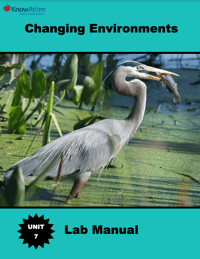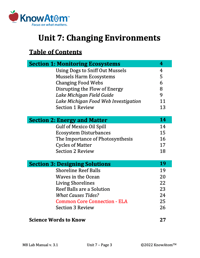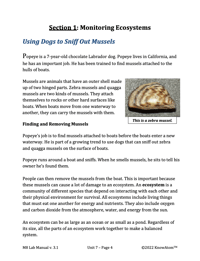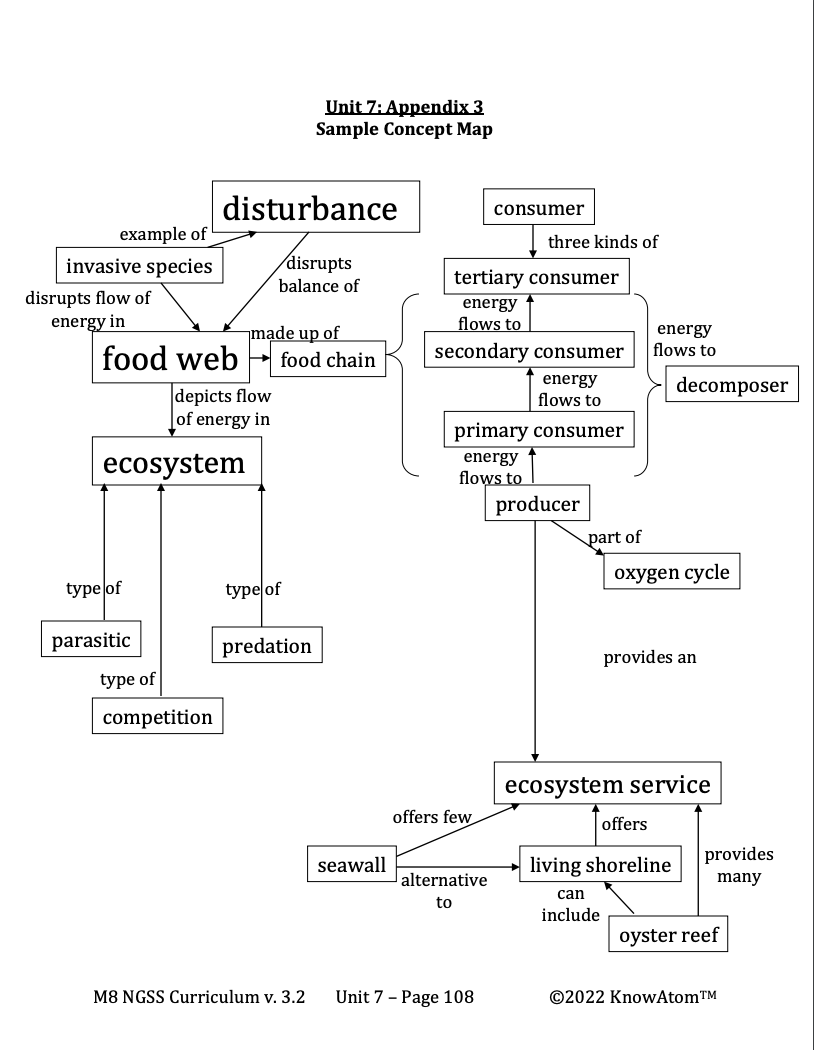Science background gives teachers more in-depth information on the phenomena students explore. Below is an excerpt from this section on photosynthesis and oil spills.
Ecosystem Disturbance
Invasive species aren’t the only disturbance that can affect an ecosystem. A disturbance is any event that changes conditions in an ecosystem.
There are many kinds of disturbances that affect ecosystems, including fires, floods, volcanic eruptions, and extreme weather such as drought and tornadoes. These events can lead to shifts of resources within an ecosystem. They can also affect the populations of organisms that make up the ecosystem.
How energy flows through an ecosystem determines which organisms will live and which will die. Because of this, a change to the ecosystem that removes an energy source will have a ripple effect throughout the ecosystem. This is similar to how the introduction of an invasive species impacts all levels of the food web. One particularly harmful disturbance is massive oil spills.
These are usually a result of human energy production. Oil spills are often the result of accidents that occur when crude oil is being stored or moved. Most oil spilled on water will float on the surface. As it spreads out across the water, it becomes very thin, forming a sheen that often appears silver or gray.
Depending on the circumstances, oil spills can be very damaging to ecosystems. Oil sheen can prevent plants from carrying out photosynthesis by blocking sunlight from plants that live in the water. Because plants form the basis of most marine ecosystems, those species that eat the plants will not have a food source. Without food for energy, they will die. This change will move up through the levels of the food web as regular food sources begin to die off.
How Matter Cycles in an Ecosystem
Matter cycles through ecosystems. Most of the matter that is on Earth today has been around since the planet first formed. Over the years, all of the molecules that make up all matter, including carbon, hydrogen, oxygen, and nitrogen, have been broken down and transformed as they move through food webs. Matter is transferred and recycled at every level of a food web.
For example, photosynthesis and cellular respiration contribute to the oxygen cycle. The oxygen cycle is a back-and-forth exchange of oxygen and carbon dioxide between plants, animals, and the environment.
Plants take in carbon dioxide from the atmosphere so that they can carry out photosynthesis. They produce oxygen along with glucose as a result of photosynthesis. When animals breathe in, they take in some of those oxygen molecules from the air. When animals breathe out, they release carbon dioxide into the atmosphere.
Carbon molecules are also cycled between plants, animals, and the environment. In the atmosphere, carbon bonds with oxygen to form carbon dioxide. When plants take in carbon dioxide to perform photosynthesis, some of the carbon atoms are used for growth, becoming part of the plant.
Animals that eat plants absorb those carbon atoms. When plants and animals die, decomposers break down the carbon atoms and return them to the environment. The carbon atoms can be taken in by plants to help them grow.










